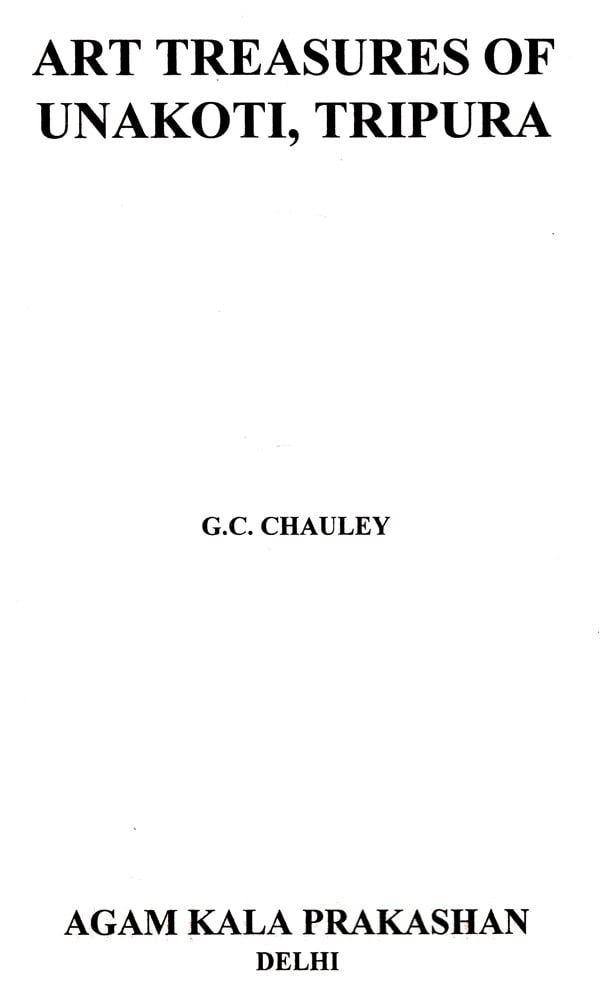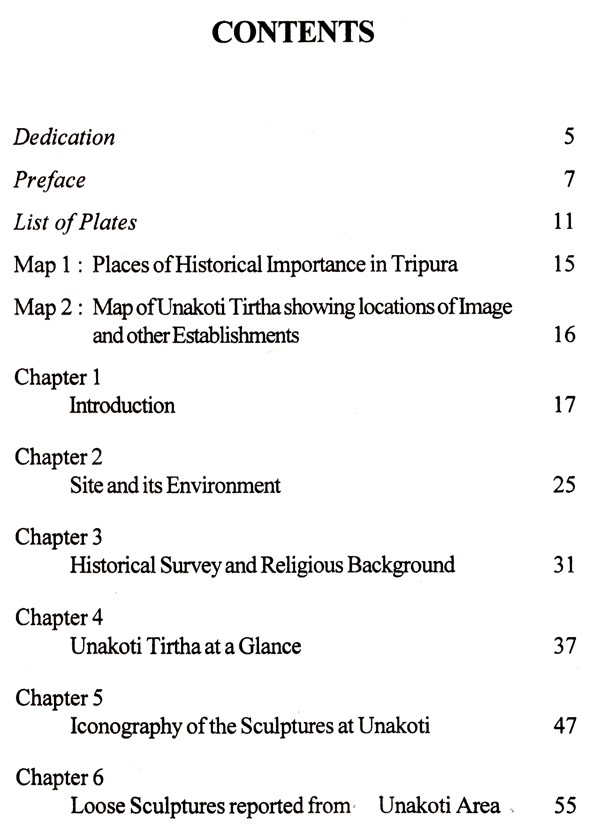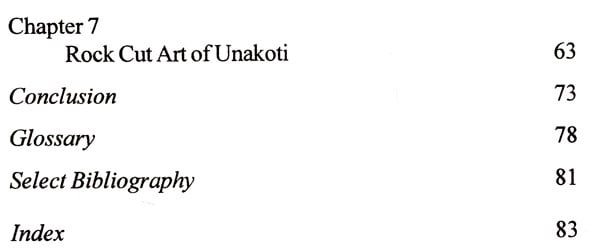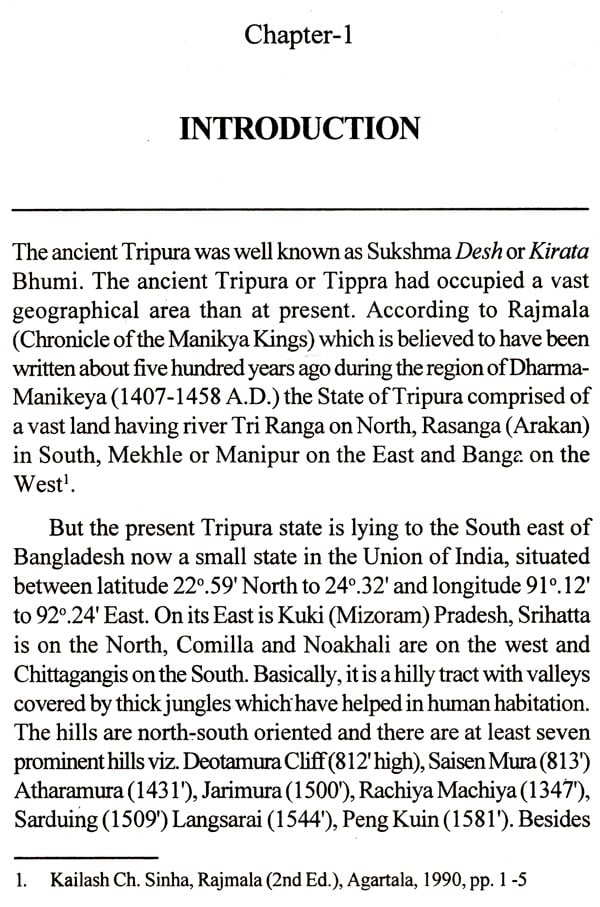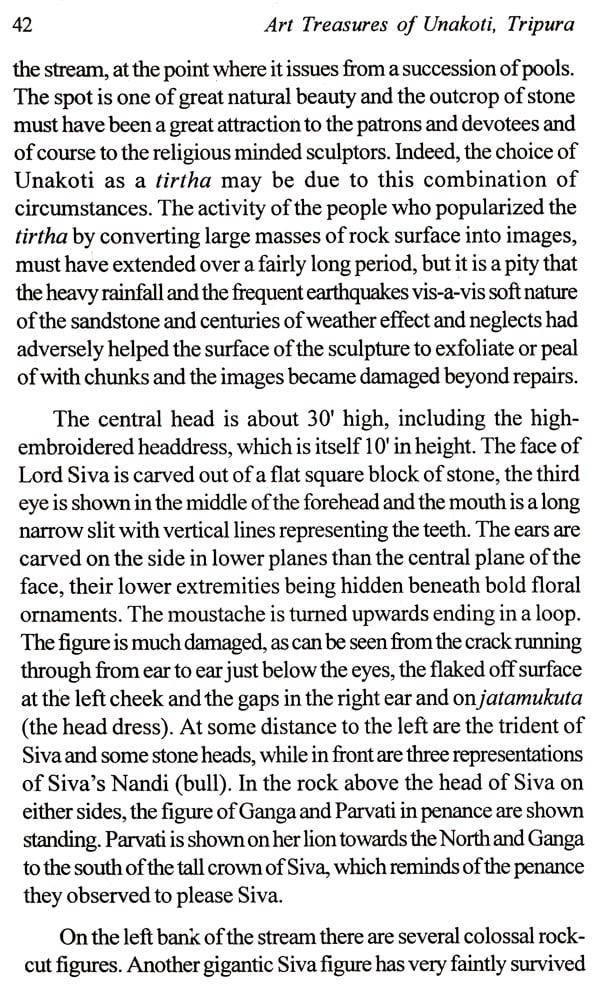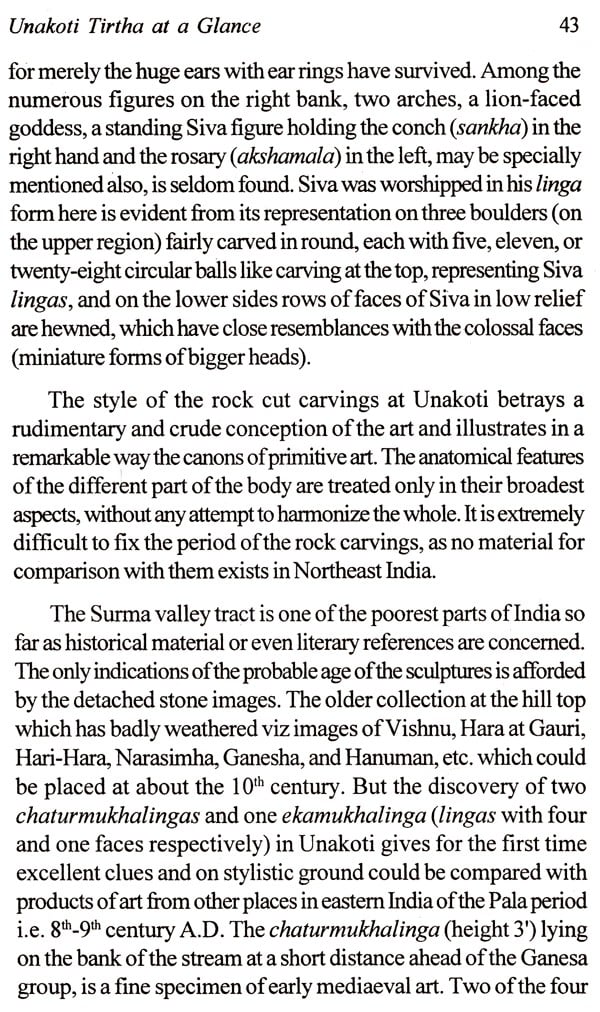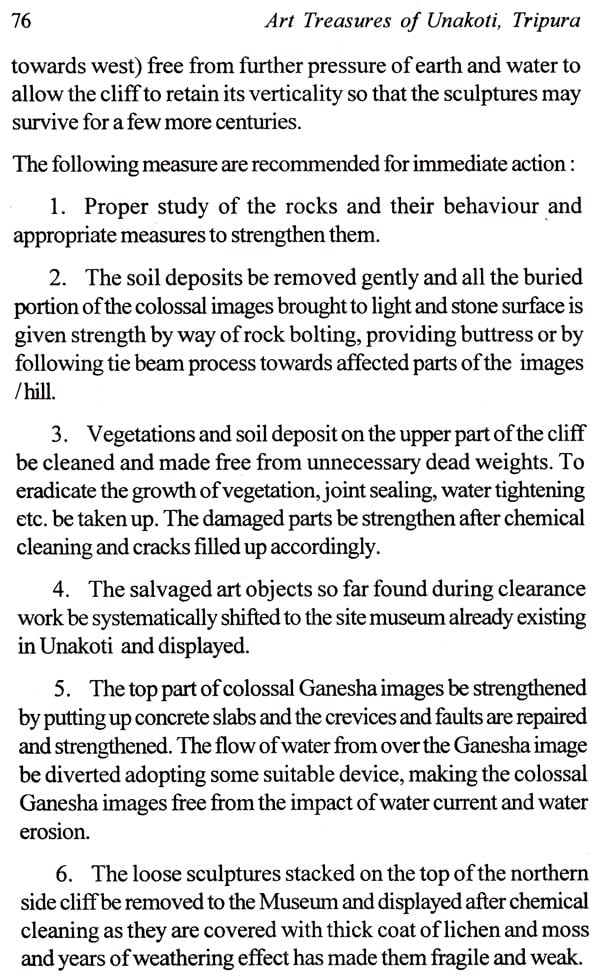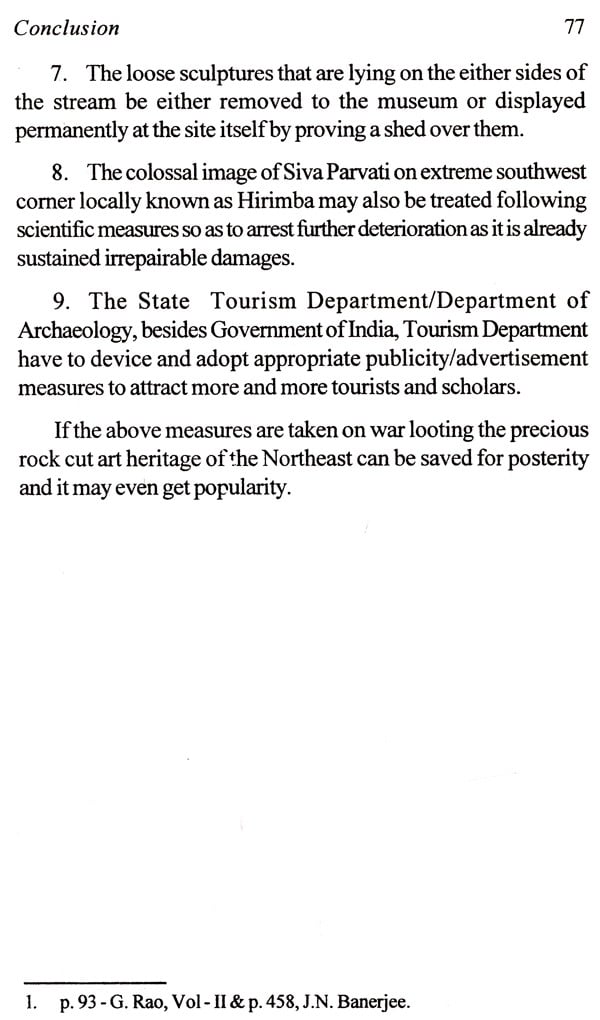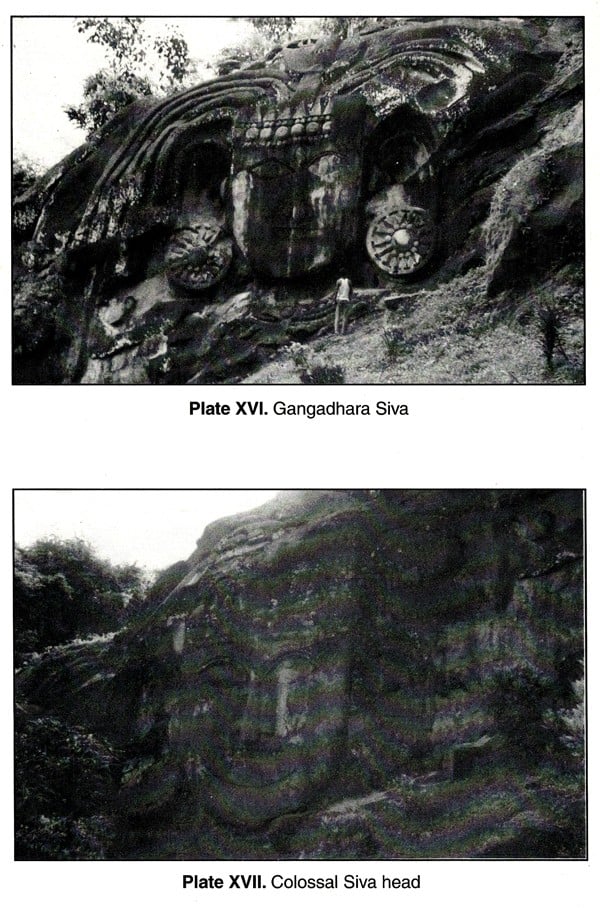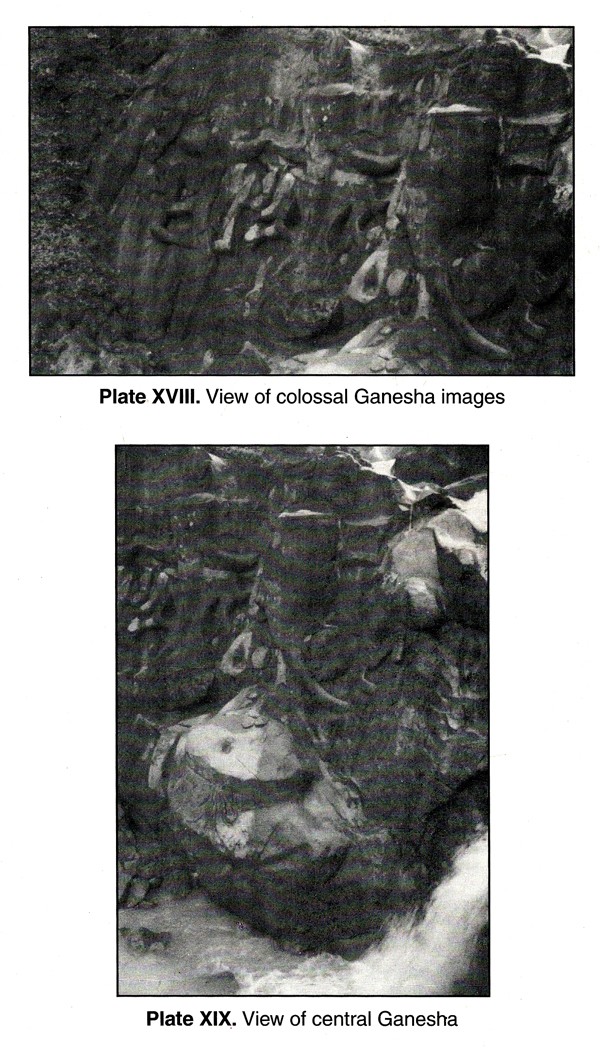
Art Treasures of Unakoti Tripura
Book Specification
| Item Code: | AZH207 |
| Author: | G.C. Chauley |
| Publisher: | AGAM KALA PRAKASHAN, DELHI |
| Language: | ENGLISH |
| Edition: | 2007 |
| ISBN: | 8173200661 |
| Pages: | 88 (Throughout Black and White Illustrations) |
| Cover: | HARDCOVER |
| Other Details | 9.00X6.00 INCHES |
| Weight | 312 gm |
Book Description
Unakoti in North Tripura has the singular distinction in possessing colossal rock cut sculptures having extra ordinary Tribal features and thus formed a class by themselves. The artistic activities in that particular place (Unakoti) began in 8th - 9th century A.D. centering around the Unakoti stream, which originates there and venerated by the ancient people of the region as sacred as Ganges and Varanasi (Banaras) in North India.
More than a dozen sculptures of Brahmanical deities existing there resembles the Pala art of Bengal of 8th - 10th century A.D. A group of artists of the post Pala era (2th-13th century A.D.) carved colossal busts of Siva in bold relief on the vertical western face of the hill highlighting Jata Mukuta, Trinetra (third eye) but having moustaches and open mouth exhibiting teeth chiseled with square shapes, an amalgamation of both traditional and tribal features and one is to look at them with awe and wonder.
Dr. G.C. Chauley, retired director of Archaeological Survey of India. He joined A.S.I. in 1970 as curator and later worked in various capacities in survey viz., Dy. S.A., S.A., Director and retired from active service on 31st December, 2005.
Dr. Chauley has already made his mark as a competent archaeologist having to his credit the excavations at Lalitgiri, Udaygiri in Orissa, Suryapahar in Assam, Shyam Sundar Tilla and Thakurani Tilla in Pillak, South Tripura and Sravasti in U.P. His contributions towards organization of Museums at Nalanda, Bodh Gaya, Old Goa, Lothal and Surya Pahar are held in high esteem.
Rock cut art tradition has a hoary antiquity. The initial beginning was made by primitive man by engraving outlines of animal and geometric motifs etc., popularly known as bruishing on rock. (Petroglyphs), a very powerful means of expressing ancient artistic sophistication.
In the ancient civilization of Egypt, Sumer and Mesopotamia rock cut sculptures are found in plenty signifying the activities of the kings, royal persons and priests. Viz warfare, hunting, court scenes etc.
In India the primitive rock bruising art are reported from Chitra Durga region of Karnataka of Neolithic period, Vikramkhol in Orissa of the Chalcolithic period and Bhimbetka, Adamgarh in Dist. Hosangabad, in M.P.
**Contents and Sample Pages**
